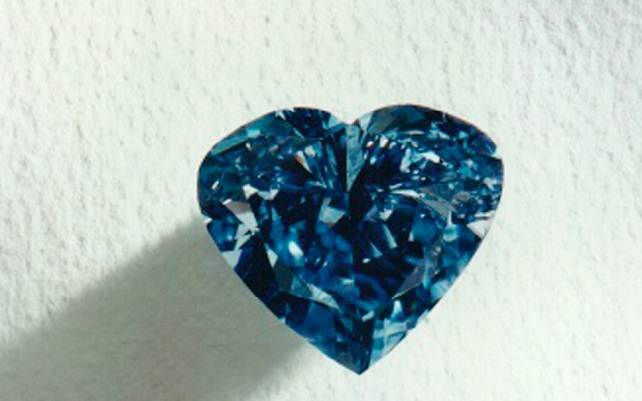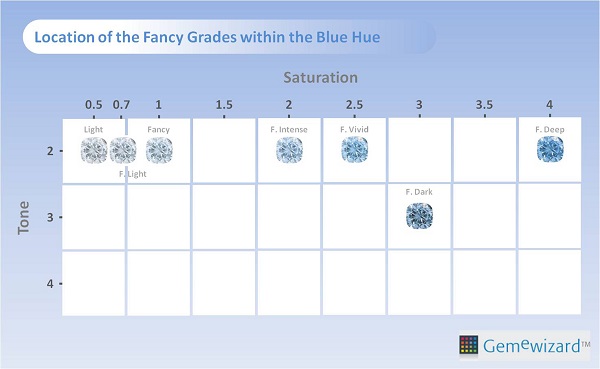Feeling blue? Well fancy that!
February 01, 17
Fancy colored diamonds have been basking in the limelight for quite some time. They have grabbed the imagination of gem enthusiasts and attracted the attention of the media around the world. News bulletins of record-breaking sales of unique specimens in all colors continuously appear and continue to fuel the fervor and increase their value.
The overall color is the main driver of the fancy colored diamond’s value. In overall color, we mean a combination of the main hue, the presence or absence of a secondary shade and the color’s intensity.
The intensity is graded using the fancy color grades Light, Fancy Light, Fancy, Fancy Intense, Fancy Vivid, Fancy Deep and Fancy Dark. But how are the borders between the grades determined? How does one define where a Fancy grade ends and a Fancy Intense grade begins? To understand this, we need to quantify the colors of the different grades and we shall do this with one of the most coveted fancy colored diamond colors - blue.
Blue diamonds were the highlights of last year’s auction scene, with some exceptional gems. Among them, The Oppenheimer Blue, The Cullinan Dream and The De Beers Millennium Jewel 4 to name a few. Therefore, this seems like a great opportunity to share with you how the borders between the fancy grades for blue colored diamonds are determined.

For this, we shall use the fancy grade images of the pure blue diamond grade ruler in the GemePrice™ system (Figure 1 above). These images represent the standard colors of each of the color intensities. Each color image is imported into the GemePro™ Sampler, where it is analyzed to retrieve its tone and saturation levels, and determine its location within tone/saturation matrix of the blue hue. The results are given in the following table (Figure 2 below).

Looking at the analysis results, we can see that practically all images of the various blue grades, including the Light, Fancy Light, Fancy, Fancy Intense, Fancy Vivid and Fancy Deep, show a very light tone grade. Indeed all are located in tone grade 2 (the minimal grade), with the exception of the Fancy Dark grade. This is anticipated, since blue diamonds tend to be light in color.
The various color grades, while sharing the same tone grade of 2, differ in their saturation level. The lighter grades fall below saturation level 1, with the Light blue diamond image showing a saturation level of only 0.5, while the Fancy Light grade displays a slightly higher saturation level of 0.7.
The Fancy blue image is the first grade to pass saturation level 1, and it is followed by a Fancy Intense blue with a saturation level of 2. The Fancy Vivid blue is found to be between saturation level 2 (similar to Fancy Intense) and 3.
For the darker colors, we can see two interesting results. First, the Fancy Deep Blue possesses a tone grade of 2 and saturation level of 4, indicating that it is actually an "over-color version" of Fancy Vivid Blue. Second, the Fancy Dark Blue grade exhibits a saturation level of 3 and a darker tone grade of 3, placing it in a lower row in the matrix.
By quantifying the grade colors, the borders between the colors are more perceptible. They lie near the middle of the respective ranges between the colors. It is clear that the distance between the Light, Fancy Light, and Fancy grades in the blue color are very close, as well as between the Fancy Intense and Fancy Vivid grades. However between the Fancy Vivid and the Fancy Deep grades, the gap is much wider and provides a greater range of intensities for this coveted Fancy Vivid grade.
There is one thing that we must keep in mind, though. The color analysis was performed using the GemePrice™ blue diamond ruler. In the real world, when it comes to blue, the trade is prepared to give some slack. As mentioned, blue diamonds typically possess lower saturations of body color when compared to other hues, and dealers tend to be more forgiving than they would be were it, for example, a yellow diamond.
Turns out that having the blues isn't all bad.